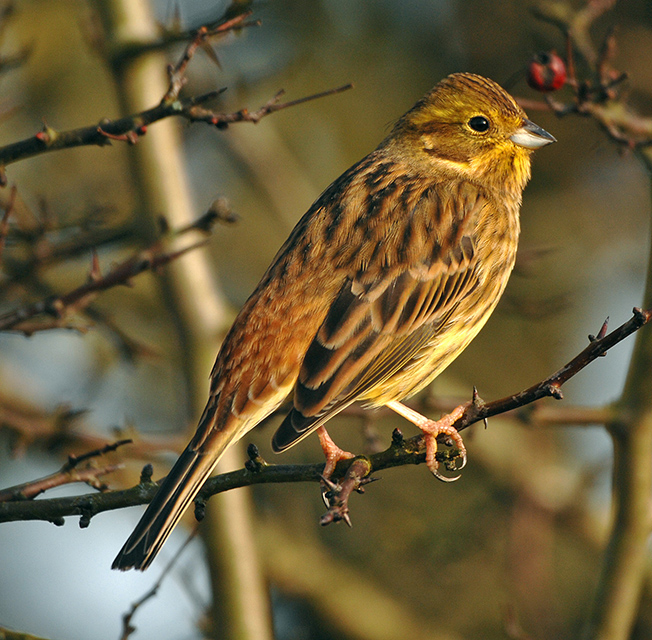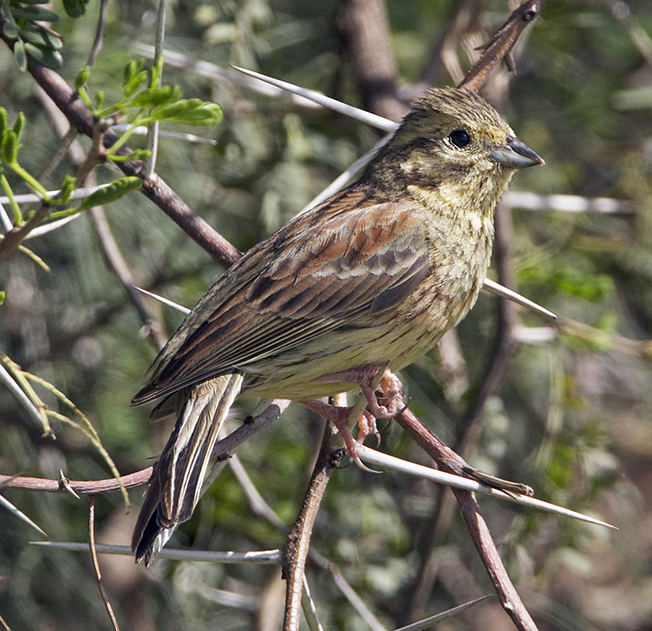THOUGH unlikely to see both species together in Britain outside the West Country, many birders will come across these two on holiday or on their annual visit to year-tick Cirl Bunting. Males are distinctive and should not pose any problem in the field. Females and recently fledged birds, however, are much more similar and should be observed with care.
When flying away males could be slightly problematic, but under most conditions the reddish-brown rump of Yellowhammer will be seen, contrasting with the grey-brown rump of Cirl Bunting. The almost entirely yellow head of male Yellowhammer should serve to clinch that species, as should the black throat and thick eyestripe of Cirl Bunting (on a yellow background with a grey-green streaked cap, extending onto the nape and chest), though this fades a little in winter.
The olive-brown rump is also a clincher for Cirl Bunting in females and first-year birds, along with a more humbug-like head with obvious thick grey-brown borders to the top and bottom of the ear coverts, which are pale centred. Compare this to the almost totally dark cheeks of Yellowhammer, which has a pale yellow spot at the rear of these coverts.
Female Cirl Bunting is brighter overall than female Yellowhammer, with rufous tinges to the scapulars and flanks, and more yellow on the belly. The former’s cap is completely grey-brown, without the yellow of the latter, and the median coverts have prominent white tips.
Immatures of both species are dull, though Yellowhammer is brighter at this age in either sex. The primaries have yellowish edges, pale buff in Cirl. Juvenile Cirls have the striped head typical of adults in a duller but still notable form, whereas juvenile Yellowhammer’s head is mostly an indeterminate grey-green-brown colour with just a slightly darker border to the ear coverts and a white dot to the rear.
The males’ songs are diagnostically distinct, with a similar tone but more notes in Yellowhammer. Typical calls are a buzzing shtoooff in Yellowhammer and a sharp zit in Cirl, but the latter also has some Reed Bunting-like seeoo notes.

Yellowhammer (Caerlaverock WWT, Dumfries and Galloway, 18 February 2007.)
The rufous rump is very prominent on this female, as is the plainer head pattern than
found on Cirl Bunting. Photo by Steve Young (www.birdsonfilm.com).

Cirl Bunting (Morocco, 25 February 2009). Note the reddish-brown scapulars
and olive-brown tone to the rump on this adult female, as well as the hint of a striped
face pattern. Photo by Markus Varesvuo (www.birdphoto.fi).


